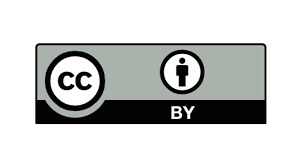Las TICs y la lúdica como herramientas facilitadoras en el aprendizaje de la matemática
Las TICs y la lúdica como herramientas facilitadoras en el aprendizaje de la matemática
Main Article Content
The experience aims to show the advantages of implementing new strategies based on the playful and the use of new technologies in the classroom considering Excel, Geogebra and other interactive materials that offers the web as enabling tools and teaching mediation as directed students in grades
9, 10, and 11, which applies even in the institution, whose main object of study focused on the strengthening of variational geometric components and data systems, by applying activities that allow to explore, discover, build and communicate mathematical thoughts that allow them to solve
problems of everyday life.
Different strategies have been implemented practices or building experiences(theorems, definitions, axioms), implementation of free software (for tabular, graph and build) and the use of various web resources (videos, multimedia, blogs, wikis and other interactive) material; seeking to impact
student motivation, their attitude of learning mathematics through active learning that involves contact with reality, while developing their mental and creative abilities.
According to the results obtained during the implementation of thestrategy; The playful and ICTs as enabling tools, addresses the problem of low achievement, poor performance in external and apathy towards learning this area of knowledge tests, finding that has significant effects on the achievement of skills (reasoning, Communication and mathematical problem solving.
Downloads
Article Details
ARMELLA MORENO, Luis. Evolución y tecnología [online]. http://www.
Minieducación.gov.co/publicaciones/intecma/cap01t14.asp. 2002, México.
AZCARATE, Carmen. Cálculo diferencial e integral. Madrid: Síntesis, 2002. 188p.
COLOMBIA, ASAMBLEA NACIONAL CONSTITUYENTE. Constitución Política de Colombia de 1991. Santafé de Bogotá. s.n, 1991
COLOMBIA, MINISTERIO DE EDUCACIÓN NACIONAL. Incorporación
de Nuevas tecnologías al currículo de matemáticas de la Educación media colombiana. Serie memorias del seminario Nacional. Santafé de Bogotá DC, 2002.
COLOMBIA, MINISTERIO DE EDUCACIÓN NACIONAL. Ley General de
Educación: Ley 115 de Febrero 8 de 1994. Santafé de Bogotá: Decreto 1860 del 3 de Agosto de 1994. 160 p.
CONSTITUCION POLITICA DE COLOMBIANA. Artículo 67.1991. Santafé
de Bogotá: El pensador editores Ltda. 1998. 26 p.
ELSTEIN, Silvia. Nuevas tecnologías y educación hacia una nueva perspectiva el la formación de profesores. [online]. http://
www.unrc.edu.ar/publicar /cde/Elstein.html. 2002, Argentina.
GOMEZ, Claudia Patricia y LOPEZ MOSQUERA, Saulo. Matemáticas
fundamentales con derive. San Juan de Pasto: Universidad de Nariño, 2002.179 p.
GOMEZ, Cristina y VALERO, Paola. Calculadoras gráficas y precálculo. El impacto en las creencias del profesor. Santafé de Bogotá: Magisterio, 2000.100 p.
RINCÓN, Olga. ( 2011). Evaluación de actitudes hacia la Incorporación de la calculadora Voyage 200 en las aplicaciones de las ecuaciones diferenciales de primer orden. Revista Ecomatemático. 2(1).21-26.
Turizo Arzuza, M. (2014). En la búsqueda de nuevas formas de interacción sociodiscursiva en entornos virtuales de aprendizaje: El nuevo rol docente. Revista Logos Ciencia & Tecnología, 5(2), 263-273. doi:http://dx.doi.org/10.22335/rlct.v5i2.123







